Related Research Articles
Phil Gold is a Canadian physician, scientist, and professor.
Louis Siminovitch was a Canadian molecular biologist. He was a pioneer in human genetics, researcher into the genetic basis of muscular dystrophy and cystic fibrosis, and helped establish Ontario programs exploring genetic roots of cancer.

The Royal Victoria Hospital (RVH), colloquially known as the "Royal Vic" or "The Vic", is a hospital in Montreal, Quebec, Canada. It forms the biggest base hospital of the McGill University Health Centre (MUHC), which is affiliated with McGill University. The hospital was established in 1893 and was based at Pine Avenue, now known as the Legacy site, until 2015, when major hospital operations were moved to the Glen site, named for the former Glen railway yards. The future uses of the Legacy site are now under study and it seems likely that the site, which is adjacent to its main campus, will be taken over by McGill University.
Harold Rocke Robertson, was a Canadian physician and the former Principal and Vice-Chancellor of McGill University (1962–1970).

Edward Donnall "Don" Thomas was an American physician, professor emeritus at the University of Washington, and director emeritus of the clinical research division at the Fred Hutchinson Cancer Research Center. In 1990 he shared the Nobel Prize in Physiology or Medicine with Joseph E. Murray for the development of cell and organ transplantation. Thomas and his wife and research partner Dottie Thomas developed bone marrow transplantation as a treatment for leukemia.
Wilfrid Bennett Lewis, was a Canadian nuclear scientist and administrator, and was centrally involved in the development of the CANDU reactor.
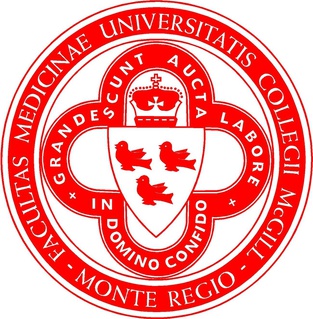
The Faculty of Medicine and Health Sciences is one of the constituent faculties of McGill University. It was established in 1829 after the Montreal Medical Institution was incorporated into McGill College as the college's first faculty; it was the first medical faculty to be established in Canada. The Faculty awarded McGill's first degree, and Canada's first medical degree to William Leslie Logie in 1833.
Richard Leigh Cruess, is a Canadian orthopaedic surgeon and academic.
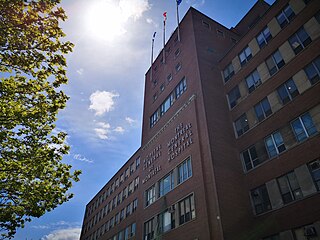
The Montreal General Hospital (MGH) is a hospital in Montreal, Quebec, Canada established in the years 1818–1820. The hospital received its charter in 1823. It is currently part of the McGill University Health Centre (MUHC) and is located on Mount Royal, at the intersection of Pine Avenue and Côte-des-Neiges Road. It has six pavilions: A, B, C, D, E and Livingston (L); plus a research centre in a separate building next to the L pavilion.
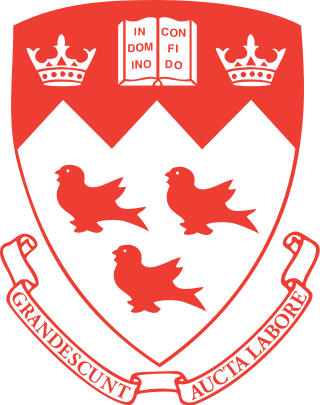
McGill University is an English-language public research university located in Montreal, Quebec, Canada. Founded in 1821 by royal charter granted by King George IV, the university bears the name of James McGill, a Scottish merchant whose bequest in 1813 formed the university's precursor, University of McGill College ; the name was officially changed to McGill University in 1885.
Balfour M. Mount, is a Canadian physician, surgeon, and academic. He is considered the father of palliative care in North America.
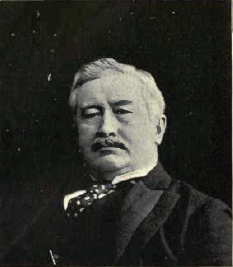
Sir Thomas George Roddick was a Canadian surgeon, medical administrator, politician, and founder of the Medical Council of Canada born in Harbour Grace, Newfoundland
Yuet Wai Kan, is a Chinese-American geneticist and hematologist. He is the current Louis K. Diamond Chair in Hematology and a Professor Emeritus at the University of California, San Francisco. He is a former president of the American Society of Hematology.
Vanderbilt University School of Medicine is a graduate medical school of Vanderbilt University located in Nashville, Tennessee. Located in the Vanderbilt University Medical Center on the southeastern side of the Vanderbilt University campus, the School of Medicine claims several Nobel laureates in the field of medicine. Through the Vanderbilt Health Affiliated Network, VUSM is affiliated with over 60 hospitals and 5,000 clinicians across Tennessee and five neighboring states, managing more than 2 million patient visits each year. It is considered one of the largest academic medical centers in the United States and is the primary resource for specialty and primary care in hundreds of adult and pediatric specialties for patients throughout the Mid-South.
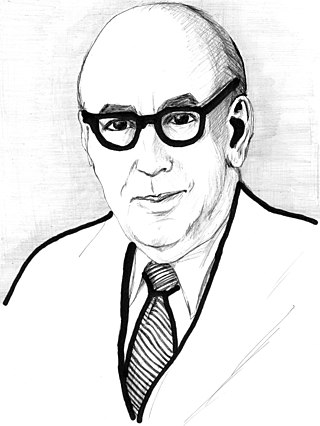
Charles Miller Fisher was a Canadian neurologist whose notable contributions include the first detailed descriptions of lacunar strokes, the identification of transient ischemic attacks as stroke precursors, the identification of the link between carotid atherosclerosis and stroke, and the description of a variant form of Guillain–Barré syndrome which bears his name.
Louis Klein Diamond was an American pediatrician, known as the "father of pediatric hematology."
Louis Lowenstein may refer to:

Edward William Archibald was a Canadian surgeon. Archibald was born in Montreal, Quebec, and received his initial education in Grenoble, France. Upon returning to Canada, he attended McGill University, receiving his Doctor of Medicine there in 1896. Archibald became interested in the specialist field of surgery, and began an apprenticeship at Royal Victoria Hospital. After a year in Europe studying under two well known physicians, the young surgeon was appointed to the staff of the Royal Victoria Hospital's Department of Surgical Pathology. However, Archibald became ill with tuberculosis, and moved to New York City for treatment. Upon his recovery, the surgeon returned to Royal Victoria Hospital. There, he developed what he had learned in Europe, and came to be dubbed Canada's first neurosurgeon.
Neal Stuart Young is an American physician and researcher, chief of the Hematology Branch of the National Institutes of Health (NIH), and Director of the Center for Human Immunology at the NIH in Bethesda, Maryland. He is primarily known for work in the pathophysiology and treatment of aplastic anemia, and is also known for his contributions to the pathophysiology of parvovirus B19 infection.
Carroll Lockard "Lock" Conley was a hematologist and founder of the Division of Hematology at the Johns Hopkins School of Medicine.
References
- 1 2 3 John C. Beck and Robert C. Hartman, Obituary: Louis Lowenstein 1908-1968, Blood (Journal of the American Society of Hematology) 32:351-353, August 1968
- ↑ Neville Terry (1994), The Royal Vic: The Story of Montreal's Royal Victoria Hospital, 1894-1994 , McGill-Queen's Press, ISBN 0-7735-1170-9, ISBN 978-0-7735-1170-5. Page 255.